Microblading has become increasingly popular in recent years as a way to achieve perfectly shaped and defined eyebrows. This semi-permanent makeup technique involves using a handheld tool with tiny needles to create hair-like strokes on the skin, giving the appearance of natural eyebrows. Understanding the basics of microblading is crucial for anyone looking to enter this field or for those who want to have a better understanding of the process.
Understanding Microblading: The Basics
Microblading is a form of cosmetic tattooing that originated in Asia and has gained popularity worldwide. It involves manually depositing pigment into the upper layers of the skin using a handheld tool with fine needles. The result is natural-looking eyebrows that can last up to two years.
The benefits of microblading are numerous. It can save time in the morning routine, as there is no need to fill in or shape eyebrows with makeup. It can also boost confidence and self-esteem, especially for those who have sparse or uneven eyebrows. Microblading is also a great option for individuals with alopecia or those who have lost their eyebrows due to medical treatments.
Microblading differs from other eyebrow techniques such as eyebrow tattooing or eyebrow extensions. Unlike tattooing, which uses a machine and goes deeper into the skin, microblading is done manually and only reaches the upper layers of the skin. This results in a more natural and realistic look. Eyebrow extensions, on the other hand, involve attaching individual hairs to existing eyebrow hairs or directly onto the skin, whereas microblading creates the illusion of hair strokes.
Choosing the Right Tools and Equipment for Microblading
To achieve successful microblading results, it is essential to have the right tools and equipment. Some of the essential tools include a microblading pen, disposable microblading blades, pigment cups, pigment rings, and cotton swabs. These tools help ensure precision and cleanliness during the procedure.
Microblading needles come in different sizes and configurations, such as U-shaped, round, or flat. The choice of needle depends on the desired effect and the technician’s preference. It is important to choose high-quality needles to ensure safety and optimal results.
Choosing the right pigments is also crucial for achieving natural-looking eyebrows. Pigments should be selected based on the client’s skin tone and hair color. It is important to consider factors such as undertones and color theory when choosing pigments. Mixing pigments can also create custom shades that match the client’s natural hair color.
Investing in quality equipment is essential for a successful microblading business. This includes a comfortable and adjustable chair for the client, proper lighting, and a clean and organized workspace. Quality equipment not only ensures safety but also enhances the overall experience for both the technician and the client.
Preparing Your Client for Microblading: What You Need to Know
Before starting the microblading procedure, it is important to conduct a thorough client consultation. This involves discussing the client’s expectations, medical history, and any allergies or sensitivities they may have. It is also important to assess the client’s skin type and condition to determine if they are a suitable candidate for microblading.
Providing pre-treatment instructions to clients is crucial for ensuring optimal results. Clients should be advised to avoid alcohol, caffeine, and blood-thinning medications before the procedure, as these can increase bleeding and affect pigment retention. It is also important to inform clients about the healing process and aftercare instructions to ensure long-lasting results.
Understanding different skin types and conditions is essential for managing client expectations. For example, clients with oily skin may require more frequent touch-ups, while clients with dry skin may experience slower healing. It is important to educate clients about these factors and provide realistic expectations about the longevity of their microbladed eyebrows.
Managing client expectations is crucial for a successful microblading experience. It is important to explain that the initial results may appear darker and more intense than desired, but they will fade and soften over time. Clients should also be informed about the need for touch-ups and the importance of following aftercare instructions for optimal results.
Mapping and Designing the Perfect Brow Shape
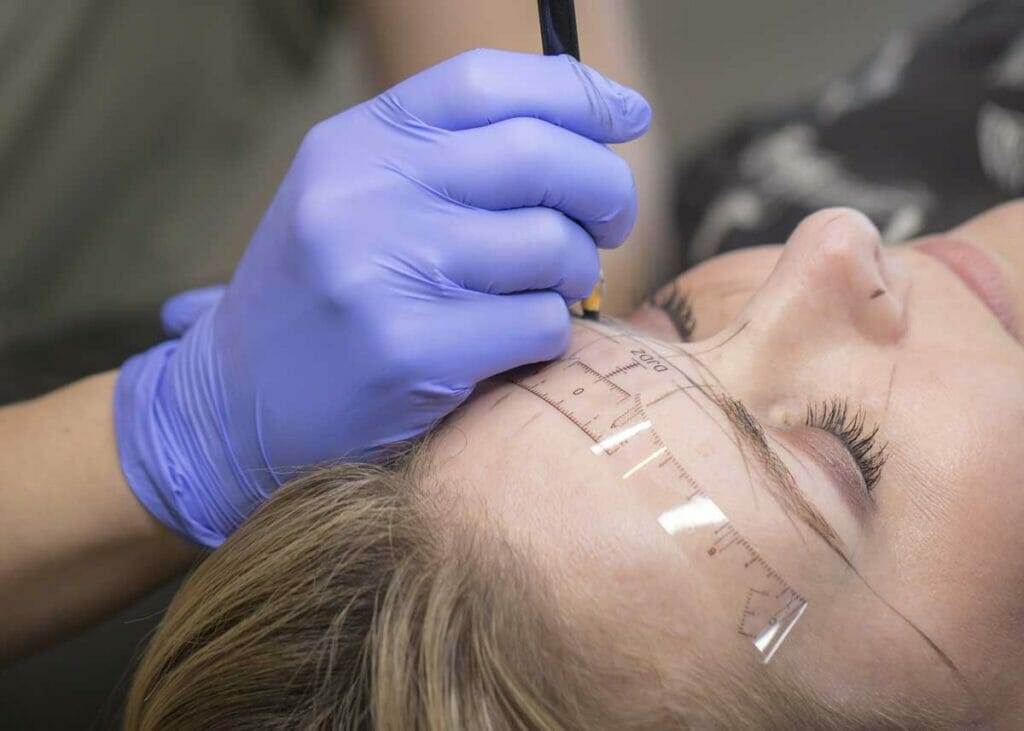
Brow mapping is an essential step in the microblading process as it helps determine the ideal shape and placement of the eyebrows. This involves measuring and marking specific points on the face to create symmetry and balance. Brow mapping ensures that the final result is tailored to the client’s unique facial features.
There are various techniques for brow mapping, but one common method is using a straight edge or ruler to measure specific points on the face. These points include the starting point, arch, and end point of the eyebrows. By measuring these points, technicians can create a customized brow shape that enhances the client’s natural features.
Designing the perfect brow shape involves considering factors such as face shape, eye shape, and personal preferences. Different face shapes require different brow shapes to achieve balance and harmony. For example, individuals with round faces may benefit from more angular brows, while those with square faces may benefit from softer, curved brows.
Customizing brow shapes for different face shapes is crucial for achieving natural-looking results. It is important to take into account the client’s facial features and bone structure when designing their brows. By customizing the shape, technicians can enhance the client’s natural beauty and create a flattering frame for their face.
Color Theory for Microblading: Matching Pigments to Skin Tone
Understanding color theory is essential for achieving natural-looking microbladed eyebrows. The right pigment should be chosen based on the client’s skin tone, hair color, and personal preferences. It is important to consider factors such as undertones and color temperature when selecting pigments.
Choosing the right pigment for different skin tones involves understanding the color wheel and how different colors interact with each other. For clients with warm undertones, pigments with yellow or golden undertones may be more suitable. For clients with cool undertones, pigments with blue or ashy undertones may be more flattering.
Mixing pigments can also create custom shades that match the client’s natural hair color. This is especially important for clients with unique hair colors or those who want a specific shade for their eyebrows. By mixing pigments, technicians can achieve a more personalized and natural result.
Avoiding common color mistakes is crucial for achieving optimal results. Some common mistakes include using pigments that are too dark or too warm for the client’s skin tone, resulting in unnatural-looking eyebrows. It is important to take the time to properly assess the client’s skin tone and choose pigments that complement their natural features.
Achieving Consistent Results: Tips for Steady Hand Movements
Steady hand movements are crucial for achieving consistent and precise microblading results. The technique involves using a handheld tool with fine needles to create hair-like strokes on the skin. Any shaking or unsteady movements can result in uneven and unnatural-looking eyebrows.
Techniques for improving hand stability include practicing proper posture, using the right grip on the microblading pen, and maintaining a relaxed and steady hand. It is important to hold the pen at a 45-degree angle and use small, controlled strokes to create realistic hair-like lines.
Common mistakes to avoid include applying too much pressure, which can result in deep and uneven strokes, or not applying enough pressure, which can result in faint and inconsistent lines. It is important to find the right balance of pressure to achieve optimal results.
Practicing regularly is key to improving consistency and achieving steady hand movements. By practicing on synthetic skin or mannequins, technicians can refine their technique and build muscle memory. It is also important to seek feedback from experienced professionals and attend workshops or training courses to further improve skills.
Numbing Techniques for a Pain-Free Microblading Experience
Numbing is an important step in the microblading process to ensure a pain-free experience for the client. The procedure involves creating small incisions in the skin, which can cause discomfort or pain. Numbing products help minimize this sensation and make the procedure more comfortable.
There are different types of numbing products available, including creams, gels, and sprays. These products contain ingredients such as lidocaine or tetracaine, which help numb the skin and reduce pain. It is important to choose high-quality numbing products that are safe and effective.
Proper application of numbing products is crucial for optimal results. The numbing product should be applied at least 20-30 minutes before the procedure to allow sufficient time for it to take effect. It should be applied in a thick layer and covered with plastic wrap to enhance absorption.
Managing client discomfort during the procedure is also important. Technicians should communicate with the client throughout the process, ensuring they are comfortable and addressing any concerns or questions they may have. Taking breaks during the procedure can also help alleviate discomfort.
Proper Aftercare: Ensuring Long-Lasting Results
Proper aftercare is essential for ensuring long-lasting results and minimizing the risk of complications. After the microblading procedure, clients should be provided with detailed aftercare instructions to follow.
Some common aftercare instructions include avoiding water, sweat, and excessive sun exposure for at least a week after the procedure. Clients should also avoid picking or scratching at the treated area, as this can affect the healing process and result in pigment loss.
Importance of proper aftercare cannot be overstated. Following aftercare instructions helps promote proper healing and ensures that the pigment retains its color and shape. Failure to follow aftercare instructions can result in fading or uneven pigmentation.
Common mistakes to avoid include using harsh cleansers or exfoliants on the treated area, as this can cause irritation or premature fading. It is important to use gentle cleansers and moisturizers specifically formulated for microbladed eyebrows.
Follow-up appointments and touch-ups are also important for maintaining the longevity of microbladed eyebrows. Clients should be advised to schedule a follow-up appointment 4-6 weeks after the initial procedure to assess the results and make any necessary adjustments. Touch-ups may be required every 12-18 months to maintain the desired shape and color.
Troubleshooting Common Microblading Mistakes
Mistakes can happen during the microblading process, but there are techniques for fixing them and preventing them from happening in the first place. Some common mistakes include uneven or asymmetrical eyebrows, incorrect pigment selection, or excessive bleeding during the procedure.
Techniques for fixing mistakes depend on the specific issue. For example, if the eyebrows are uneven, additional strokes can be added to create balance. If the pigment is too dark, it can be lightened by using a color corrector or by performing a saline removal treatment. If there is excessive bleeding, applying pressure and using a hemostatic agent can help control it.
Preventing mistakes from happening in the first place involves proper training and ongoing education. It is important to stay up-to-date with the latest techniques and trends in microblading. Attending workshops, training courses, and conferences can help improve skills and prevent common mistakes.
Importance of ongoing education and training cannot be overstated. The field of microblading is constantly evolving, and new techniques and products are being introduced. By staying informed and continuously learning, technicians can provide the best possible results for their clients.
Advanced Microblading Techniques: Ombre, Combination, and Powder Brows

In addition to traditional microblading, there are advanced techniques that can be used to achieve different eyebrow styles. These techniques include ombre brows, combination brows, and powder brows.
Ombre brows involve creating a gradient effect, with the front of the eyebrows being lighter and gradually getting darker towards the tail. This technique is achieved by using a shading or stippling technique instead of individual hair strokes. Ombre brows create a soft and natural-looking result.
Combination brows combine microblading with shading or ombre techniques. This technique is ideal for clients who want a more defined and filled-in look. Combination brows create the appearance of hair strokes in the front of the eyebrows and a shaded or ombre effect towards the tail.
Powder brows involve creating a soft, powdered effect that resembles the look of filled-in eyebrows with makeup. This technique is achieved by using a shading or stippling technique to deposit pigment evenly throughout the eyebrows. Powder brows create a more defined and polished look.
Customizing techniques for different clients is important for achieving their desired results. It is important to assess the client’s preferences, facial features, and skin type when deciding which technique to use. By customizing the technique, technicians can create eyebrows that enhance the client’s natural beauty.
Microblading is a popular and in-demand technique for achieving perfectly shaped and defined eyebrows. Understanding the basics of microblading is crucial for anyone looking to enter this field or for those who want to have a better understanding of the process.
From choosing the right tools and equipment to mastering advanced techniques, there are many factors to consider when it comes to microblading. By following proper protocols, providing excellent client care, and continuously learning and growing in the field, technicians can achieve optimal results and build a successful microblading business.
If you have any experience or tips related to microblading, we encourage you to share them in the comments below. Together, we can continue to learn and grow in this exciting field of beauty.

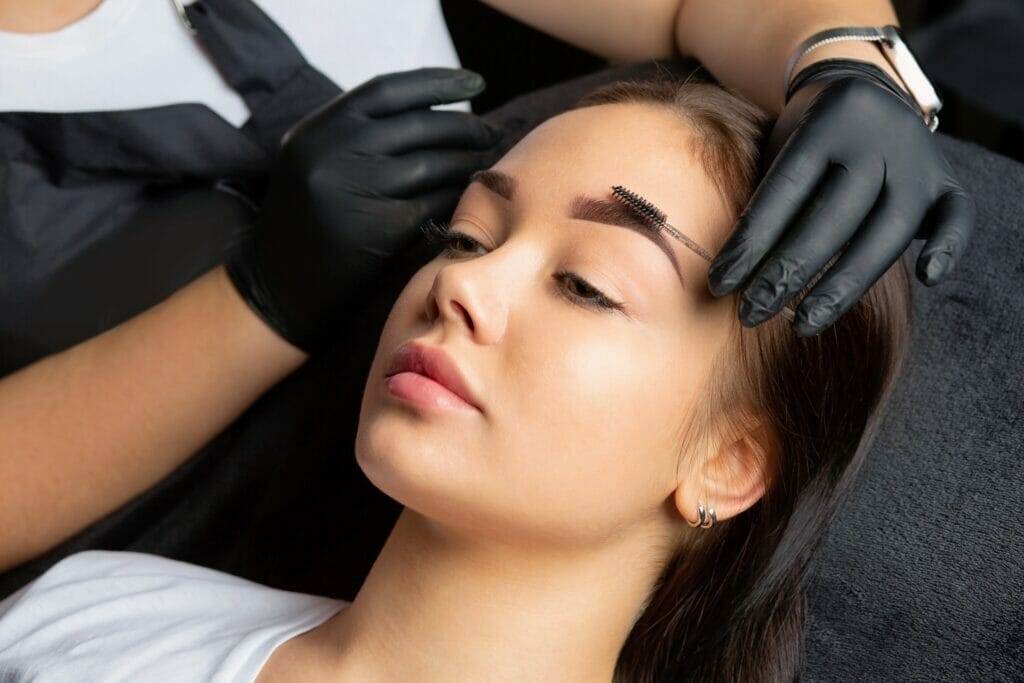
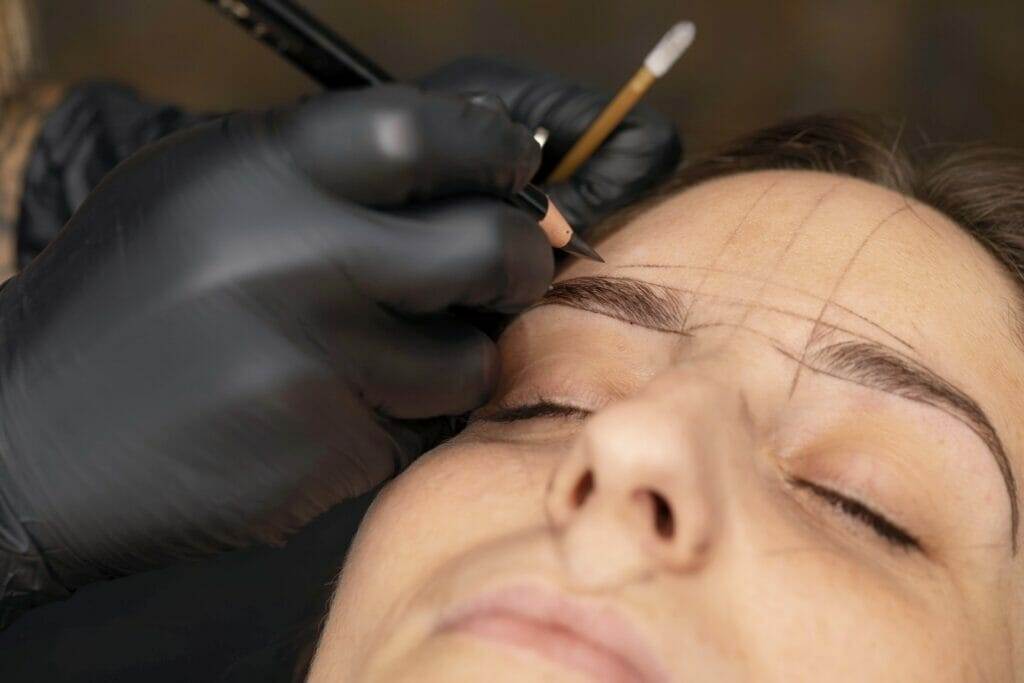
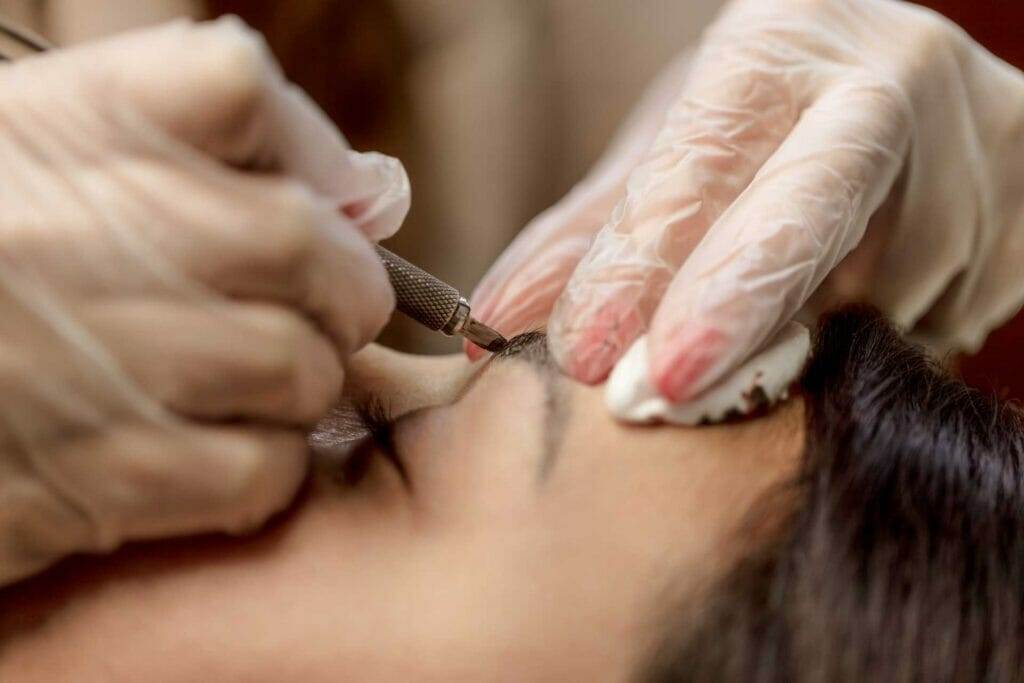
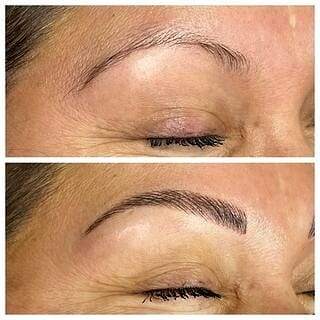
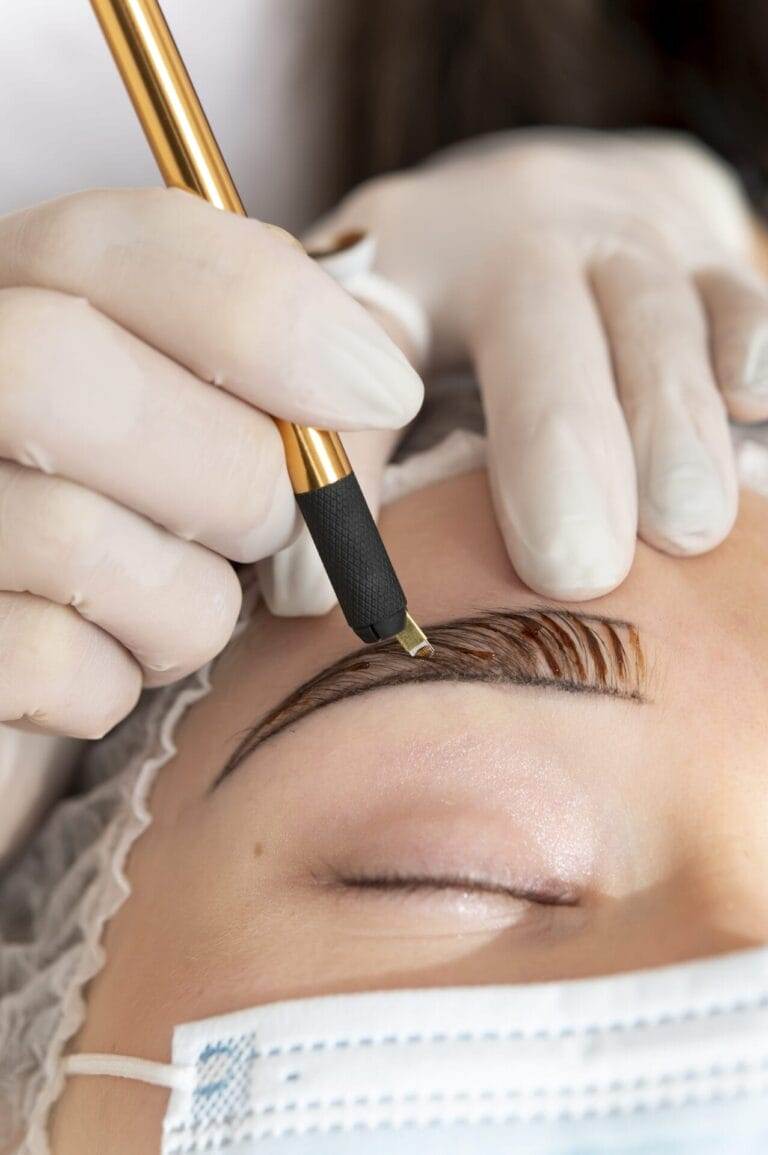

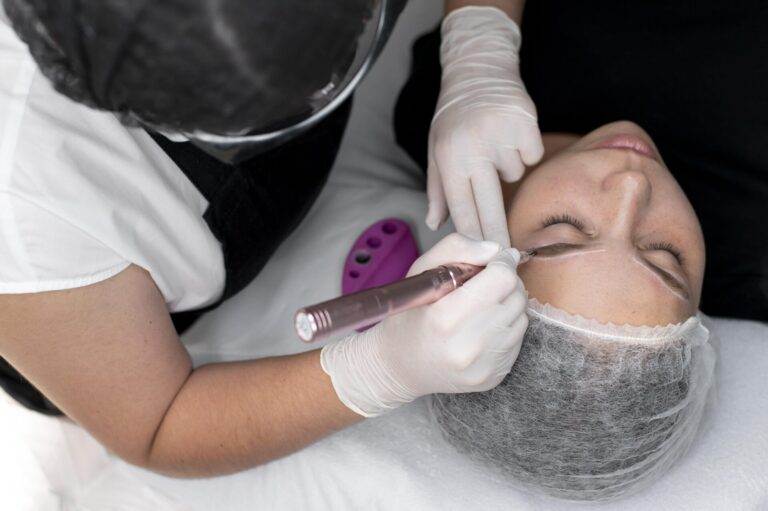
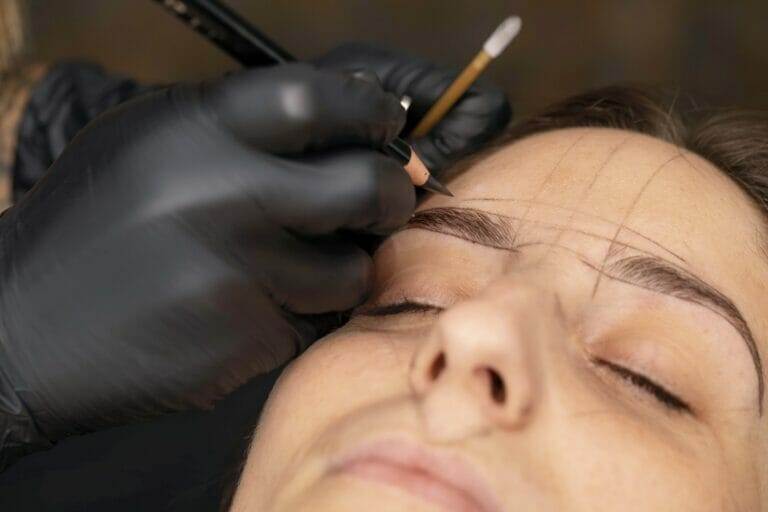

How do I find someone near to mentor do this? And the cost. I live in Tulsa oklahoma
Looking for someone to doing cosmetic tattooing and pricing.